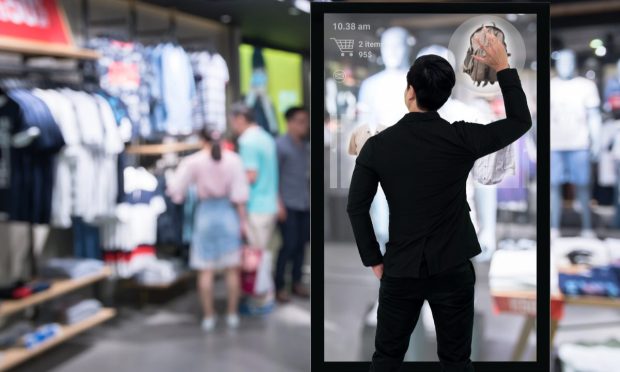Mastercard: Retailers Prepped to Turn Holiday 2021’s Success Into 2022’s Retail Revival

There is no better teacher than experience — and when you add in the benefit of holiday season hindsight that’s just a few days old, the opportunity for edification is even greater.
As much as this year’s peak retail season was fraught with supply chain challenges, pandemic uncertainties and economic under currents, Steve Sadove, former CEO of Saks Fifth Avenue and now a senior Mastercard adviser, told Karen Webster that the real gift of this season may be the many lessons it bestowed upon retailers who were paying attention.
“There are a lot of lessons coming out of [the holidays] and some of them have been building [for years],” Sadove said, “but I’d start with the lesson of the early extended season.”
By that, Sadove means that for the second year in a row, holiday shopping began with promotions in October that ran right through Christmas, featuring sales that really weren’t that deep.
“The consumer buys early and the reality is they continue to buy,” he said. “So, finding ways to keep this season, to [make it run] longer, from call it early October to the end of the year, and then planning for that as you go into 2022,” that would be lesson number one: having a series of promotions, and having product that is staged over multiple months.
Plan Ahead, Stay Ahead
The next big seasonal takeaway that Sadove said retail industry executives should note is how to manage inventory.
He says that retailers fell into a situation where they didn’t know what demand was going to be and everyone was planning for the worst, so they didn’t buy enough inventory. However, that not only worked in their favor, but also carried a second lesson.
“That played to their benefit in a sense, because the promotions were less and they weren’t trying to clear out so much product [at the end of the season],” he said.
Managing inventory in such a way that you don’t have to go into a deep discount mode has enormous implications for retailers, Sadove said, as does creating a “notion of scarcity” for the consumer.
“So I think that that’s a lesson learned and something that you want to think about as you go into ’22,” he added.
Inventory, Inventory, Inventory
Fashions come and go all the time and are almost always a hit-or-miss challenge for retail buyers, who — even if they have the correct style — may not have the right color or size.
Being aware of trends is critical for retailers, and Sadove said that although the new cycle of apparel was disrupted by the omicron outbreak in Q4, that derailment will only be temporary.
“I think that this new cycle of apparel is an important one. You see it in the numbers,” he said. “Everybody was home wearing sweatpants, then things opened up and the apparel sector took off. That’s not going to stop in a three month period,” he added.
Whether it’s a fashion sensibility or demand for more comfortable clothing, Sadove said that people are dressing differently and far less formally than before.
“So [retailers should be] thinking as you go into ’22, ‘how do you build that, not just into our product, but our marketing?’” he surmised, while pointing to the fact that apparel was the fourth quarter’s fastest growing sector.
The Vibrancy of eCommerce
One final rearview mirror observation Sadove shared with PYMNTS has to do with what he calls the “continued vibrancy” of eCommerce.
“You grow 50% one year, and then you grow double digits, or 11%, off of that number and you’re at 20% of eCommerce,” he said. “So, if you’re not delivering on that omnichannel buy online, pickup in store, having inventory across channels [and] all the things go along with that, you’re a loser,” he said, because that trend is just going to continue to accelerate.
Sadove also points to the need for retailers to deploy even greater use of data analytics and to take advantage of new thinking on loyalty programs as another key focus area for the new year.
“I think it’s going be one of the big themes for 2022,” he predicted.
